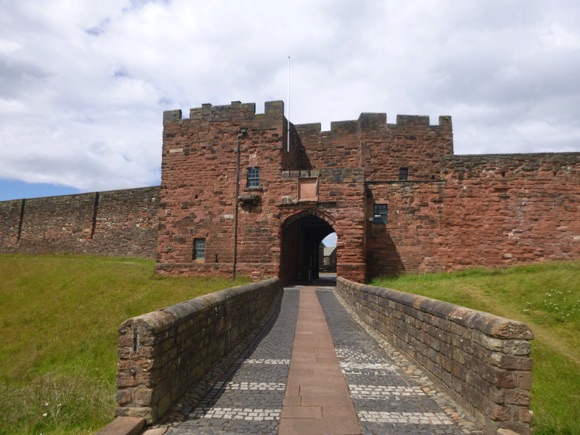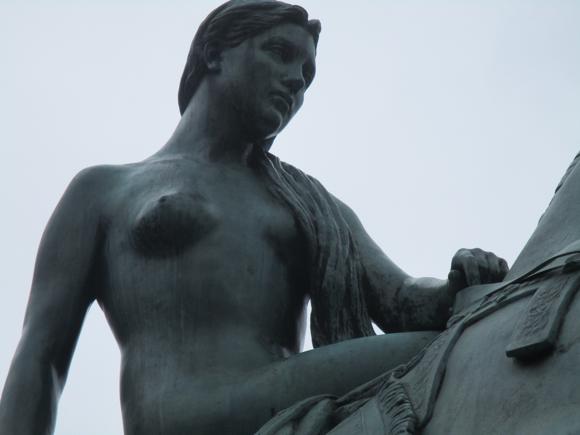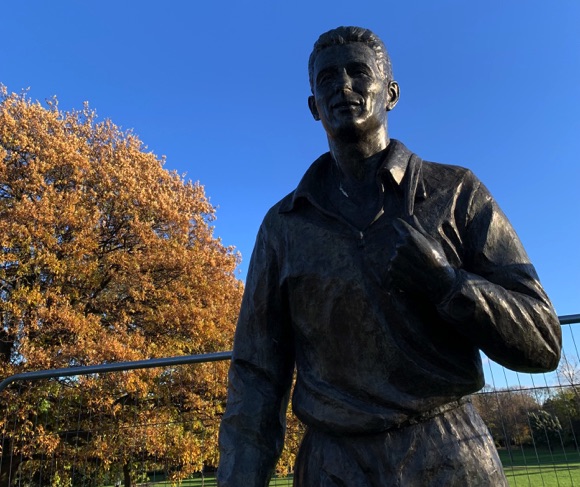Teams, tales and tips – a guide to the local game
Almost halfway between Nottingham and Sheffield, Mansfield shares something of the footballing longevity unique to each – without the prestigious silverware to show for it.
Field Mill, home of Mansfield Town, is the oldest ground in England to still host professional football. Its history and patchwork series of hosts in the earliest days of the game tell a story similar to that in other textile communities of the north Midlands, Yorkshire and Lancashire.
Here the mill in question belonged to the local Greenhalgh dynasty, whose pater familias Herbert employed 300 people and encouraged the menfolk to take up sport. On the other side of Quarry Lane opposite the mill, a field first hosted cricket then, from 1861, the works football team.

Four of Greenhalgh’s five sons played for Notts County, the world’s oldest professional football club. One of them, Ernest Harwood Greenhalgh, took part in the very first football international, Scotland-England in 1872, and in the return match the following year.
Greenhalgh junior then ran the factory team – Mansfield Greenhalghs – and the ground they played on.
Field Mill, originally called Greenhalgh’s Ground, hosted the factory side until 1895, when it merged with the original Mansfield Town (no relation to today’s). The new club, Mansfield FC, moved into town, away from the banks of the River Maun. Greenhalghs had already competed in the FA Cup, winning a tie at Field Mill in 1892, but the modest community of Mansfield was already heaving with football teams. Mansfield Amateurs and Mansfield Mechanics were two that used Field Mill after the Greenhalghs’ departure.
Mansfield FC, meanwhile, folded in obscurity.

Another local club, Mansfield Wesleyans, had an ecclesiastical background as opposed to industrial. Founded in 1897 at what is today the Bridge Street Methodist Church close to the river, east of the town centre, this club played its first game against local side Sherwood Foresters then joined the Mansfield & District Amateur League.
Within a decade the Wesleyans could turn professional, separating from the church and competing in the Notts & District League as Mansfield Wesley. Mansfield Mechanics remained the top team in town, beating Wesley in the FA Cup of 1909-10.
Wesley, based at Newgate Lane near the church, decided to take the initiative by changing their name to Mansfield Town. To no avail. With the railway extended through Newgate Lane, Mansfield Town were forced to move back to basic Radcliffe Gate closer to the church. The Mechanics played at Field Mill.

The Central Alliance League to which the two clubs belonged was brought to halt halfway through World War I. With no takings, Mansfield Mechanics let things slide on rent money for Field Mill, and duly found themselves made homeless by its landlord, William Cavendish-Bentinck, the 6th Duke of Portland.
A military man – one of his hunting team had almost accidentally shot the Archduke Franz Ferdinand near Mansfield in 1913, thus perhaps averting war – the duke rented Field Mill to local disabled servicemen, who in turn rented it to… Mansfield Town.
With the Mechanics ousted, Town were now top dogs. The revitalised club won the Central Alliance in new colours of amber-and-blue and bought the lease on Field Mill.
Impressive results in the highly competitive Midland League and runs in the FA Cup brought full League status – eventually. The Stags had to opt for Division Three (South) rather than (North) but initiated what would be a 77-year stint in the Football League at Field Mill in 1931, with the duke as guest of honour.

Third- or fourth-tier every season but one, Mansfield soon established a lively rivalry with Chesterfield and, in 1953, solidarity with Nottingham Forest, who attracted a record game in a cup game at Field Mill then provided the opposition for a fund-raising match when the Stags faced bankruptcy.
Friendships fell by the wayside during the bitter Miners’ Strike of 1984, when Mansfield became the centre of the breakaway UDM group at loggerheads with the National Union. More than 30 years on, matches with teams from Yorkshire and Derbyshire, Chesterfield included, still carry the malice from the Thatcher years.
As a town, Mansfield has moved on, with only the bizarre and controversial sculpture of two steel stilettos to mark its shoemaking past, and the huge derelict winding towers of nearby Clipstone Colliery now overlook a more diverse, modern community of just short of 100,000 people.

Nevertheless, supporters from former NUM strongholds would have taken great pleasure from Mansfield’s demise in 2008, when Town fell out of the League. Protests against club owner Keith Haslam reached their zenith.
In the aftermath, a group of local businessmen bought the club, but not the ground – like the Mechanics a century before, the Stags were locked out of Field Mill, albeit temporarily, when rent wasn’t paid. Field Mill is now called the One Call Stadium. Both ground and club are owned by the husband-and-wife team of John and Carolyn Radford, although a planned hotel has yet to go further than a planning application.
Ex-Town directors formed breakaway AFC Mansfield in 2012, based at Forest Town east of Mansfield, close to Sherwood Forest Golf Club. Promoted to the Northern Counties East League Premier, the Bulls reached the Third Qualifying Round of the FA Cup in 2017, losing 2-0 to Boston United at Forest Town Arena on Clipstone Road.
The ground is by Forest Town Library, a bus stop on Stagecoach routes 14, 15 (direction Walesby) and 16 (direction Clipstone) from Mansfield bus station in town 10mins away. The clubhouse bar at the ground welcomes all spectators.
Getting Around
Arriving in town, local transport and timings

East Midlands Airport is 42km (26 miles) from Mansfield. A TrentBarton Skylink bus 247 runs every 30mins-1hr to Nottingham train station (£6.70 from the driver, journey time 40mins). From there, an hourly train to Mansfield (£6 single) takes 35mins. From London St Pancras, you have to change at Nottingham, total journey time 2hr 30-45mins, £30 online. It’s the pretty much same from Manchester and Birmingham.
Mansfield station is a short walk from town and the football ground. If you need a bus, they’re mainly run by Stagecoach. A Day Rider ticket is £3.80, pay on board. A PlusBus supplement when you buy your train ticket also allows all-day use of buses, for £3.30.
Mansfield Taxis (077426 777 079) are an experienced local firm, with transfers from East Midlands airport from £30 and Doncaster Sheffield Airport 53km (33 miles) away from £35.
Where to Drink
The best pubs and bars for football fans


Right in town on Church Street, the 16th-century Swan features plasma screens inside and out, with DJs spinning after the football action finishes of a Saturday. Nearby, the Green Dragon is a popular spot for match-watching and partying afterwards.
The town once housed the largest independent brewery in the UK (‘Not Much Matches Mansfield’) and there’s still a great tradition for ales. Also on Church Street, Ye Olde Ramme is as traditional as it gets. The bar counter at the Brown Cow at Ratcliffe Gate, near Mansfield Wesley’s original pitch, is lined with 12 hand-pull pumps pouring house bitter and pale, and Everards Tiger.



At Stockwell Gate, within easy reach of town and the ground, the Bold Forester is a family-friendly bar/restaurant in the Hungry Horse group, where live TV sport is sacrosanct.
A little further out but still convenient for Field Mill, the family-run Nell Gwyn at 117 Sutton Road has an excellent selection of ales and a big screen for TV football, as has the nearby Sir John Cockle, a huge Marston’s pub known for its Sunday roasts. Both are on the Stagecoach 1 and Trentbarton nines bus routes into town.
Where to stay
The best hotels for the ground and around town



Visit Nottinghamshire has a database of regional accommodation.
The nearest hotel to the ground is the Travelodge Mansfield City Centre, a new-build on Gilcroft Street, with paid-for parking. Right by Mansfield station, the Midland is a 28-room hotel in need of an overhaul, but with its own bar and restaurant.
Another convenient choice, although further away, might be the two-star Clifton, set in a Victorian building on tree-lined Terrace Road. It’s a short walk into the town centre, Field Mill on the other side about 15mins away.
in the same vicinity, slightly further out, the Mansfield Lodge Hotel is an affordable two-star of 20 rooms, in a large, stand-alone Victorian building. The bar has satellite TV and there’s a restaurant, too. Just along the street at the junction with Nursery Street, Stagecoach buses 1, 11 and 12 run to Mansfield bus station in 5mins.
Mansfield’s two other budget chains are both out of the centre. The Premier Inn Mansfield, actually in South Normanton, sells itself on its proximity to the Peak District – it’s about 5km west of town, beside junction 28 of the M1 and close to the East Midlands Designer Outlet on the regular trentbarton nines bus route to Mansfield.
The Travelodge Mansfield is in neighbouring Sutton-in-Ashfield, also on the trentbarton nines bus route, and Stagecoach route 1.










































































